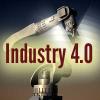Strategic advice to leverage new technologies
Technology is at the heart of nearly every enterprise, enabling new business models and strategies, and serving as the catalyst to industry convergence. Leveraging the right technology can improve business outcomes, providing intelligence and insights that help you make more informed and accurate decisions. From finding patterns in data through data science, to curating relevant insights with data analytics, to the predictive abilities and innumerable applications of AI, to solving challenging business problems with ML, NLP, and knowledge graphs, technology has brought decision-making to a more intelligent level. Keep pace with the technology trends, opportunities, applications, and real-world use cases that will move your organization closer to its transformation and business goals.
Insight
In Part III of this Executive Update series on customer experience (CX) management in the enterprise, we examine findings pertaining to the benefits organizations hope to obtain from implementing CX practices and technologies.
To show what is being implemented with currently available drone technologies and within the current regulatory framework, this Advisor offers examples from three verticals: construction, engineering, and precision agriculture.
Industry 4.0 — Opening Statement
This issue of Cutter Business Technology Journal examines the latest advancements in technologies related to Industry 4.0 and the impact of these technologies on work, business, and organizations. We feature six articles in this issue that cover a range of topics.
Most executives say agility is critical for the future of their business, yet only a small amount of their transformation efforts are delivering agility. This gap is caused by entrenched legacy culture and general resistance to change. Responding to these challenges and delivering business agility require more than Agile practices. Many organizations are discovering “solution focus” to be the missing piece of their transformation puzzle.
Weiyu Wang and Keng Siau address the ethical and moral predicaments that Industry 4.0 creates. They discuss Industry 4.0 ethical and moral issues from the perspective of different business-oriented forces — stakeholders and business executives, employees, customers/clients, society — and different technical-oriented forces — designers and developers, users, intelligent agents. Their framework in Industry 4.0 considers ethical issues related to data and ethical issues related to systems, technology products, and services. Their discussion will enable business executives and technical designers/developers to have a better understanding and appreciation of the ethical and moral challenges in Industry 4.0.
Keng Siau, Yingrui Xi, and Cui Zou explore the challenges and opportunities that Industry 4.0 presents in four groups of countries: developed, newly industrialized, developing, and least-developed. Industry 4.0 will impact countries in these development stages differently. The article discusses the factors that will impact the development of Industry 4.0 and provides suggestions for countries to avoid the risks inherent in Industry 4.0 and capitalize on opportunities to develop their economies. The article is beneficial to business executives as they contemplate investment decisions related to Industry 4.0.
Feng Xu and Xin (Robert) Luo argue that because Industry 4.0 leads to potential new cybersecurity risks to manufacturing and supply networks, cybersecurity management must protect industry assets. The authors examine the issues specific to Industry 4.0, the three conventional essential security requirements, present and discuss the challenges of the security management cycle in Industry 4.0, and offer recommendations for cybersecurity management in Industry 4.0.
Barry M. O’Reilly explores whether a skills crisis arising out of Industry 4.0 truly exists. Although organizations perceive a skills crisis as Industry 4.0 makes software a central part of every business, O’Reilly notes that the IT industry has complained of a skills crisis for years. He examines what the skills shortage really is, discusses past approaches to the crisis, and evaluates whether those approaches have worked. He then proposes a new view of the skills crisis and suggests alternative approaches to solving it. O’Reilly sees critical thinking and a reassessment of our view of skills as key components of resolving the perceived skills crisis.



















